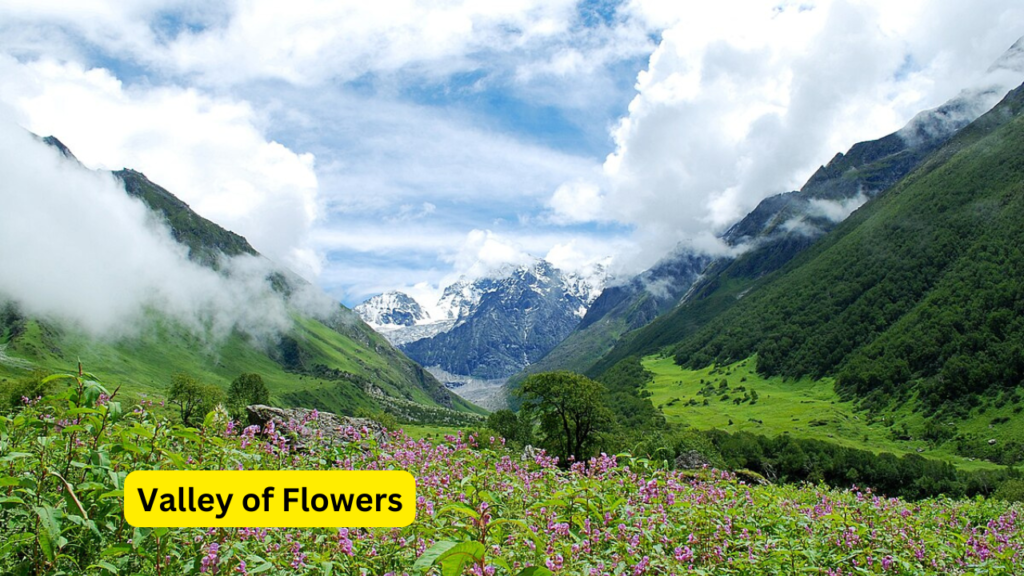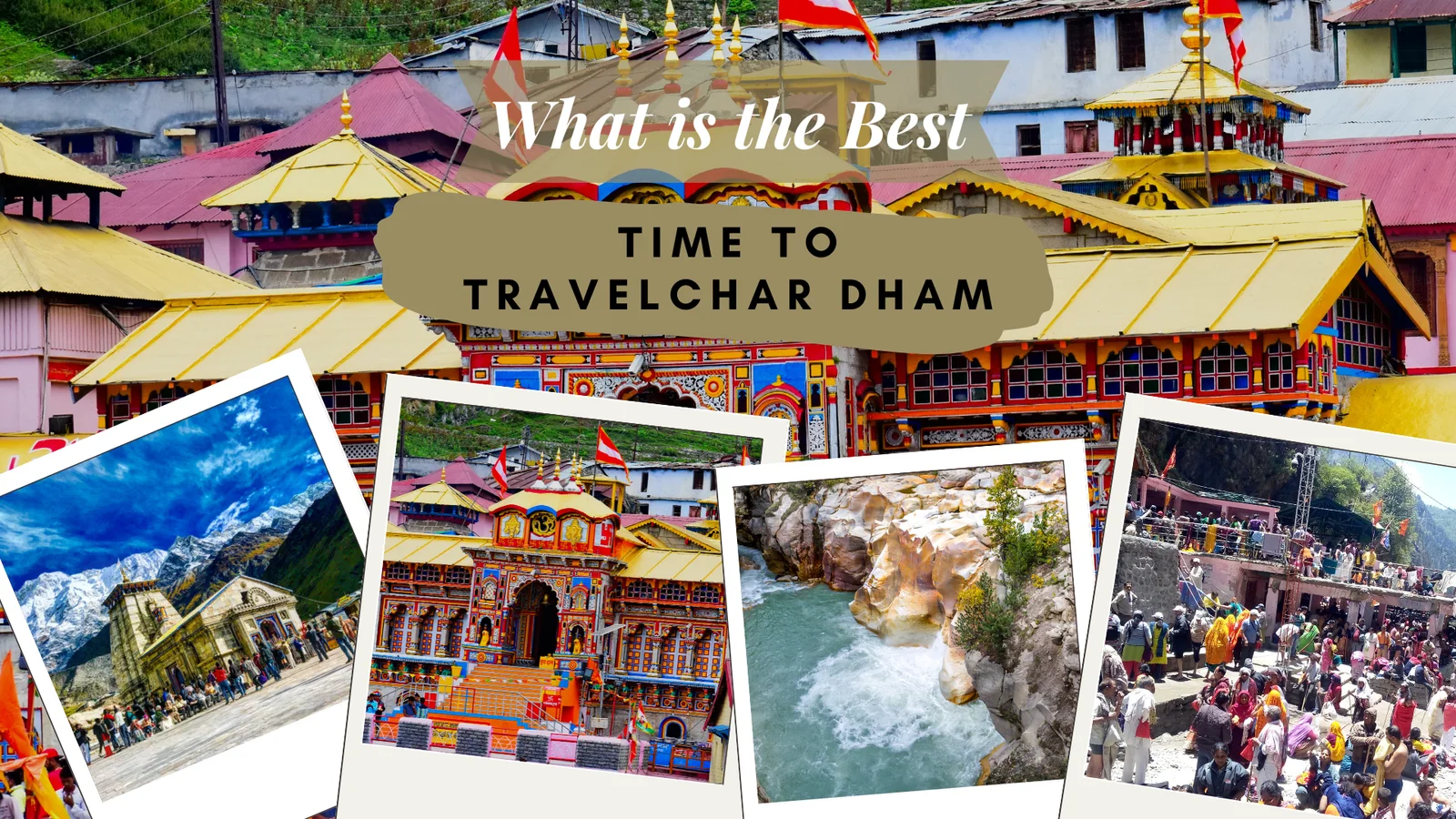Valley of Flowers: Near By Place and How to reach There?

Book Your Tour with Travel Acharya – Char Dham Yatra with Valley of Flowers Tour Package
Valley of Flowers Introduction:
Valley of Flowers National Park is known for its beauty and endemic alpine flowers of more than 600 species in one place. The Valley of Flowers National Park was established in 1982 and is located in Chamoli in the state of Uttarakhand at an altitude of 11,811 feet and is 3,352 meters above sea level.
This place is also known as ‘Fullo ki ghati’. UNESCO has declared this valley as ‘the best monsoon place in India’. One must reach the Govindghat to reach here and has to complete the trek of 13-14 km. Let’s know about the flowers and other related things you can see here.
Travel Tips:
- You must carry Good walking boots, and a woolen sweater as it is a cold place. An umbrella. a windproof jacket and an emergency tool kit are a must.
- Children below the age of 16 must have to be there with their parents as the trek is a little steep and can lead to any mishappening.
- Avoid visiting the place in Monsoon and the best time to visit here is the blooming season.
- A permit from the Forest Department Government counter in Ghangaria is important to visit the Valley of Flowers which is valid for 3 days, and almost 500 people trek daily in the season (July-September).
How to reach Valley of Flowers
We have discussed travel tips about this heavenly place in the above section. Now, it’s the right point to understand the “How to reach” there. So let’s start our virtual journey to the Valley of Flowers. Firstly, you should know that it is located between Nar Parvat and Hathi Parvat. And it’s close to the Hemund Sahib as well.
By Road:
Once you reach Haridwar or Rishikesh, you have to move further by road only. As we all are familiar with the typical terrain of interior Uttarakhand, so railway and airways are not accessible beyond Haridwar and Rishikesh.
Haridwar to Valley of Flowers Route:
When you move from Haridwar towards the Valley of Flowers by road, then all of the important in-route places that you will witness are mentioned below. By looking at the below information, you’ll get an overview of this route and ultimately it will help you to plan your journey in a better way.
After Haridwar, you will witness Rishikesh, Devprayag, Srinagar, Rudraprayag, Gauchar, Karnaprayag, Airas, Nandprayag, Birahi, Joshimath, Gulabkoti and Govindghat sequentially. All of these places are mentioned in the right order so don’t get confused about that.
When you reach Govindghat, the two routes divide from there. One of two routes, which goes straight from Govindghat, will make you reach the doorstep of none other than Badrinath Dham (One of the Char Dhams). If you proceed to Badrinath, then you’ll see the places Lambagad, Pandukeshwar, and Hanuman Chatti on the route.
Now, the second route, which is trekkable and on the right side from Govindghat, goes to the Valley of Flowers, via Bhyudar. So you have to head towards this one to reach your destination.
And if you have a desire to visit Hemkund Sahib, you can go there via Ghangaria. Ghangaria is only 1.4 Km from Flower Valley, and it will take approximately 30 minutes to reach Ghangaria.
Valley of Flowers By Railway:
The nearest railway stations that are considered by tourists to reach the Valley of Flowers are Haridwar and Rishikesh Railway stations. Haridwar Railway Station is 292 Km away, while Rishikesh Railway Station is 269 Km away. There are no other Railway Route options to reach there except these two. So you have to opt for any of these.
Nowadays it’s very easy to book train tickets, you just have to log into the IRCTC website. You can track the seat availability, route, and train running status by your smartphone only.
Valley of Flowers By Flight:
If you want to save your travel time then prefer the flight to reach Uttarakhand. The Jolly Grant Airport located in Dehradun is 279 Km away from the Valley of Flowers. So book your Air tickets for this airport and come to Uttarakhand hassle-free.
Distance Chart of Valley of Flowers:
| Distance From | Distance (Km) |
| Bhyudar | 6 Km |
| Ghangaria | 1.4 Km |
| Govindghat | 15 Km |
| Sri Hemkund Sahib | 4.3 Km |
| Badrinath | 38 Km |
| Gulabkoti | 42 Km |
| Joshimath | 25 Km |
| Pipalkoti | 60 Km |
| Nandprayag | 86 Km |
| Karnaprayag | 106 Km |
| Rudraprayag | 138 Km |
| Devprayag | 201 Km |
| Rishikesh | 271 Km |
| Haridwar | 291 Km |
| Gopeshwar | 81 Km |
| Ukhimath | 149 Km |
| Sonprayag | 185 Km |
| Dehradun | 307 Km |
| Delhi | 520 Km |

Nearby Places to visit in Valley of Flowers
Book Your Tour with Travel Acharya – Char Dham Yatra Package from Delhi | Best Tour package for Char Dham
Here we are sharing some of the local places that are near Valley of Flowers. These places are not very popular but offer mesmerizing views and some religious significance. Hence, if you have time, you can check into the below sites.
- Kagbhusandi Lake
- Bhadreshwar Mount Valley
- Bhavishya Badri temple
- Auli Hill Station
- Vridha Badri Temple
- Chanap Valley Trek
- Sri Hemkund Sahib
- Hemkunt Lake
9 Famous Flowering Plants Found in Valley of Flowers
The Valley of Flowers has so many flowers there of different species such as daisies, orchids, hibiscus, and marigolds. The name history also proves the beauty and flora of the place such as Valley of Flowers was discovered in 1931 by three British mountaineers.
They were visiting Mt.Kamla and lost their way and reached here. The beauty and attraction make them amused to name it as ‘Valley of Flowers’. Let’s know about the famous flowers found here.
Madagascar Periwinkle:
The plant is also known as ‘Sadabahar’ in the Indian language and has a long history of cultivation. There have been so many Madagascar trees in the Valley of Flowers over the years, as this is a very colorful evergreen subshrub and herbaceous plant. It is cultivated to give more colors or to make the other plants more tolerant to cold.
- Bloom time: Summer, Spring, Autumn
- Madagascar periwinkle is also known as Bright Eyes and Old Maid.
Chinese Hibiscus:
The tree Chinese Hibiscus is a national flower of Malaysia and is featured on Malaysian coins. This plant is used to make shoe-black polish and black hair dye. Chinese hibiscus, a small flowering tree, is well known for its fragrant flowers all over the world.
- Bloom time: Summer, Autumn
- It is also known as Rose Mallow and shoe-flower.
Oleander:
Oleander is a small tree or shrub a decorative garden plant. The majestic pink five-lobed flowers and deep green lanceolate leaves make this plant very beautiful and famous for its beauty. To see the beauty of these plants you must visit here. But one must take care of their children to not touch this plant as it is poisonous and found a little more risky for everyone.
- Bloom time: Summer, Autumn
- It is also known as Nerium.
Poinsettia:
The poinsettia is a common and popular flower found in the United States and Germany during Christmas. The 70 million poinsettias were sold in 6 weeks in today’s world as this plant was famous by Albert Eckle and he was the one who immigrated to Germany from California.
- Bloom time: Winter
- It is also known as a Painted leaf or winter rose.
Crown of Thorns:
The crown of thorns is a plant that needs special care. Crown of thorns is a houseplant, or you can grow this plant in your house where you get full sunlight throughout the day. Because, the crown of thorns needs to stay above 10 degrees Celsius with full sun to grow properly, and this plant is commonly found in Madagascar.
- Bloom time: Summer, Spring
- It is also known as Christ’s thorn.
Crape Jasmine:
This Crape jasmine can grow 25 m tall. It is a white and pine, wheel-shaped flower and is also known as Tabernaemontana-divaricata. This plant is a little easy to grow such as it needs light sunshine. This plant blooms throughout the year and yes you can row it at home with little care. This jasmine plant is famous as a natural hedge or a backdrop of gardens.
- Bloom time: Spring, Summer
- It is also known as Paper Gardenia, Pinwheel flower, and East Indian rosebay.
Moss Rose:
Moss rose plant is commonly found in South America and is an easy to grown plant in annual flowerbeds. You can grow it even in containers, or in hanging baskets because of its trailing habits. The moss rose is a semi-succulent ornamental flower with different colors, petal numbers, and shapes.
- Bloom time: Spring, Summer, Autumn
- It is also known as Moss Rose Purslane, eleven O’clock, Vietnam rose, Sun rose.
African Marigold:
The plant is commonly used for decoration purposes as this plant has very bright orange color or red color flowers. This flower has significant benefits to use not only for decoration purposes but also to replicate insects, rabbits, and deer due to its toxic latex.
- Bloom time: Summer, Autumn
- It is also known as the Mexican Marigold, the Flower of the Dead.
Red Frangipani:
Red frangipani or Plumeria Rubra is a small tree or deciduous shrub, commonly found in Central and South America. This plant is also used in spiritual tapestry by Buddhists Hindus due to its ability to bloom even when uprooted for offering, immorality, or symbolizing.
- Bloom time: Summer, Autumn
- It is also known as Common frangipani, Red-jasmine.
Conclusion on Valley of Flowers
Almost all the information you need before wandering into the beautiful valley of flowers in Uttarakhand is mentioned above in detail. This destination is so beautiful and offers majestic views of colorful flowers and Himalayan peaks, that you can spend a whole day roaming here and there between the valley.
Hence, we have introduced you to this must-visit tourist place in India. Besides that, if you want to know something else about the tours in Uttarakhand, then feel comfortable to contact us by mail and social media pages.
Book Your Tour with Travel Acharya – Char Dham Yatra From Haridwar





